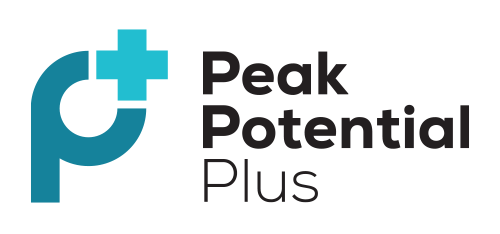Weight loss plateaus can be frustrating, but they’re a common part of the journey. Here, we’ll explore how employing strategic portion control can be the key to overcoming these hurdles and reigniting your weight loss progress.
Introduction
A Brief Overview of Weight Loss Plateaus
Weight loss plateaus occur when the body adapts to a reduced calorie intake, slowing down metabolism. Understanding and addressing these plateaus is crucial for sustained weight loss.
The Role of Portion Control in Overcoming Plateaus
Portion control acts as a powerful tool to manipulate caloric intake, influencing the body’s response and breaking through the stagnation of weight loss plateaus. By carefully managing how much you eat, you can kickstart your metabolism and push past the plateau.
Understanding Weight Loss Plateaus
Definition and Causes
Weight loss plateaus are periods of stalled weight reduction despite continued efforts. Common causes include metabolic adaptation, hormonal changes, and psychological factors that affect adherence to dietary plans. Recognizing that plateaus are a natural part of the weight loss process is the first step in navigating and conquering them.
The Psychological Aspect of Plateaus
The psychological impact of plateaus can be demotivating. Recognizing and addressing the emotional aspects of weight loss can enhance the effectiveness of portion control strategies. Understanding that mental resilience is as crucial as physical discipline helps you stay focused during challenging times.
The Science Behind Portion Control
How Portion Control Influences Metabolism
Portion control helps regulate caloric intake, preventing metabolic adaptation and encouraging a steady rate of weight loss. This is achieved by creating a sustainable calorie deficit. By carefully managing your portions, you keep your metabolism engaged and responsive, preventing it from slowing down.
Hormonal Impacts on Weight Loss
Strategic portion control positively influences hormones related to hunger and satiety, such as ghrelin and leptin, promoting a hormonal environment conducive to weight loss. This means that beyond just reducing calories, portion control helps regulate hormones that play a significant role in controlling your appetite.
Assessing Your Current Eating Habits
Keeping a Food Journal
Maintain a detailed food journal to gain insights into your eating habits. This awareness is the first step towards effective portion control. A food journal helps you identify patterns and triggers, making it easier to pinpoint areas where portion control adjustments can be most beneficial.
Identifying Problematic Eating Patterns
Recognize patterns like emotional eating or mindless snacking that may contribute to overconsumption. Addressing these patterns enhances the success of portion control efforts. By identifying and addressing specific eating triggers, you can tailor your portion control approach to address your unique challenges.
Setting Realistic Portion Goals
The Importance of Gradual Adjustments
Abrupt changes can be challenging to sustain. Gradually adjust portion sizes to make the process more manageable and sustainable. This approach ensures that your body has the time to adapt to new eating habits, increasing the likelihood of long-term success.
Customizing Portion Goals for Individuals
Portion control isn’t one-size-fits-all. Customize your goals based on factors like body weight, activity level, and personal preferences for a more tailored approach. Recognizing and embracing your individuality is key to creating portion control strategies that work for you in the long run.
Tools for Effective Portion Control
Using Portion Control Plates
Invest in portion control plates to simplify the process. These plates guide you in selecting appropriate servings of different food groups. Portion control plates take the guesswork out of meal planning, making it easier to adhere to your dietary goals.
Smart Strategies for Dining Out
Navigate restaurant menus by employing strategies like sharing dishes, ordering appetizers as main courses, or choosing smaller portions to stay on track during social outings. Dining out doesn’t have to derail your progress; strategic choices can make a significant difference in managing portion sizes.
Mindful Eating Practices
Engaging Your Senses
Practice mindful eating by engaging all your senses. Pay attention to colors, textures, and flavors to savor each bite and prevent mindless overeating. Mindful eating brings a new level of awareness to your meals, fostering a deeper connection with your food and promoting healthier portion control.
Slowing Down and Savoring Each Bite
Eating slowly allows your body to register fullness, reducing the likelihood of overeating. Enjoy the experience, and listen to your body’s hunger and satiety cues. Slowing down not only enhances the pleasure of eating but also gives your body the time it needs to signal when it’s satisfied.
Balancing Macros in Controlled Portions
Optimizing Protein Intake
Protein-rich foods play a crucial role in maintaining muscle mass during weight loss. Ensure adequate protein intake within controlled portions to support your body’s needs. Protein is not only essential for muscle preservation but also contributes to a feeling of fullness, supporting your portion control efforts.
Adjusting Carbohydrates and Fats
Balance carbohydrate and fat intake based on your energy requirements. Modifying these macronutrients in controlled portions can optimize weight loss efforts. Understanding the role of each macronutrient and adjusting their proportions according to your body’s needs ensures a well-rounded and sustainable approach to portion control.
The Role of Water Intake
Staying Hydrated for Weight Loss
Adequate water intake supports weight loss by promoting satiety and enhancing metabolism. Ensure you’re hydrating throughout the day. Drinking water not only helps control your appetite but also supports overall health, making it a fundamental component of successful weight loss.
Water as an Appetite Suppressant
Drink water before meals to help control appetite. This simple practice can contribute to effective portion control and overall weight loss success. Water serves as a natural appetite suppressant, helping you consume fewer calories during meals and aiding in the overall effectiveness of your portion control strategy.
Exercise and Portion Control
Finding the Right Exercise Balance
Pairing portion control with the right exercise regimen enhances weight loss results. Find a balance that aligns with your fitness level and goals. Exercise complements portion control by increasing your calorie expenditure and supporting overall well-being, creating a synergistic effect for successful weight loss.
Complementing Workouts with Appropriate Nutrition
Tailor your nutrition to support your exercise routine. Properly portioned meals and snacks provide the energy needed for workouts while maintaining a calorie deficit. Matching your nutritional intake with your exercise routine ensures you have the fuel required for optimal performance while still aligning with your weight loss goals.
Monitoring Progress
Celebrating Non-Scale Victories
Celebrate achievements beyond the scale, such as improved energy levels or clothing fitting better. Non-scale victories keep you motivated on your weight loss journey. Recognizing and celebrating the positive changes in your life beyond the numbers on the scale reinforces the value of your efforts and keeps you motivated for the long haul.
Adjusting Portion Control as You Lose Weight
As your weight changes, reassess portion sizes to align with your new caloric needs. Continuously adjusting ensures sustained progress. Your body’s requirements change as you lose weight; regularly reassessing and fine-tuning your portion control approach helps you stay ahead of these changes and maintain a successful weight loss trajectory.
Seeking Professional Guidance
Consulting with a Nutritionist or Dietitian
When in doubt, seek professional advice. Nutritionists or dietitians can provide personalized guidance tailored to your unique needs and challenges. Professional guidance adds an extra layer of support, offering personalized insights and strategies that align with your individual health and weight loss goals.
Recognizing When to Ask for Help
Don’t hesitate to ask for help when facing persistent challenges. Professional support ensures you receive expert guidance to navigate complex issues hindering your progress. Recognizing when to seek help is a sign of strength, and it can be the catalyst for breaking through plateaus and achieving long-term weight loss success.




















